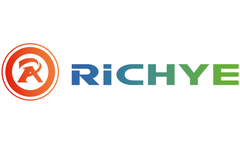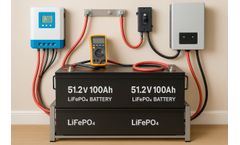Refine by
Charge Controller Articles & Analysis: This-Year
10 articles found
Avoid full deep cycles when possible: Though LFP tolerates deeper DoD than lead-acid, keeping the battery between roughly 20–90% SoC for daily cycling extends overall life. Choose MPPT charge controllers: MPPT controllers harvest more energy from PV panels under variable conditions and charge LFP batteries more efficiently ...
So skimping on panels might not actually save you money once you consider the balance of system components like batteries, charge controllers, and inverters. Availability: Availability is something that is not talked about much with solar panels, however, this can play a significant role in your choice. ...
Knowing your chemistry informs how deeply you can draw your battery bank each day and how to schedule recharge intervals to avoid damage. 2. Invest in a Quality Charge Controller Your charge controller regulates how power from solar panels—if installed—or shore power fills your battery. For solar installations, a ...
Smart controllers monitor and cut off loads before harmful discharge levels. A generic PWM (pulse-width modulation) controller may charge a lithium battery, but it won’t optimize for longevity or safety. ...
Power Conditioning: Inverters transform DC into clean, grid‑compatible AC for household appliances, while charge controllers regulate battery charging. Balance‑of‑System (BoS): Wiring, breakers, disconnects, grounding equipment, and monitoring devices tie the system together safely and intelligently. ...
Depth-of-Discharge (DoD): Percentage of battery capacity used before recharging. State-of-Charge (SoC): Remaining capacity, typically monitored by a battery management system. ...
Avoid generic “modified sine wave” if you have mixed loads. 4. MPPT Charge Controller What it means: MPPT stands for Maximum Power Point Tracking. An MPPT charge controller is built into most hybrid inverters: it continuously adjusts the DC input operating voltage from the PV array to harvest maximum power under ...
Future Expansion If you plan to add more battery capacity or increase loads, size your charge controller and conduit for extra panels. Common Pitfalls to Avoid Ignoring Losses: Skipping the efficiency factor leads to under-sized arrays that fail in marginal conditions. Overbuilding Array Without Budgeting BOS: More panels demand larger charge ...
Flat Discharge Curve A near-constant voltage profile maximizes usable capacity and allows inverters and charge controllers to operate more efficiently. Lightweight & Compact At roughly half the weight of comparable lead-acid banks, LiFePO₄ modules are easier to install and require less supporting structure. ...
Priority is given to powering the home’s loads; any surplus charges the battery bank through the inverter or charge controller. Grid-Connected Mode: If battery storage is full and loads are met, additional solar energy is exported to the grid (where net metering is available). ...



